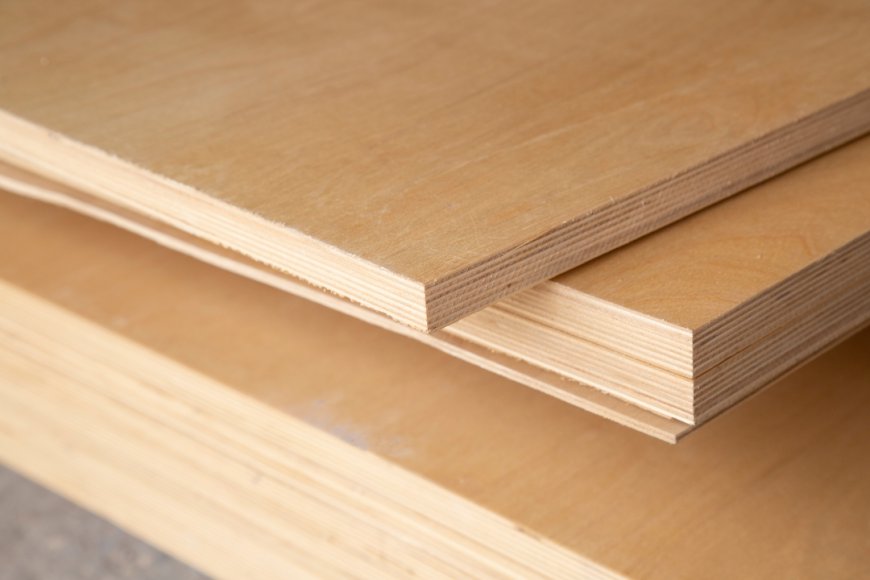The Journey of Plywood Manufacturing in Kerala: From Forest to Factory

The plywood manufacturing industry in Kerala is mainly known for its quality and sustainable practices. From the lush forests to advanced factories, each step in the production process is meticulously executed to ensure high standards.
This blog dives into the comprehensive journey of plywood manufacturing in Kerala, highlighting the crucial stages from raw material sourcing to the final product.
Kerala’s Plywood Industry
Kerala, often referred to as "God's Own Country," is not only known for its picturesque landscapes but also for its thriving plywood manufacturing industry. The state's abundant natural resources, skilled labor force, and favorable climatic conditions make it an ideal location for plywood production.
Plywood manufacturing in Kerala has evolved significantly over the years, combining traditional practices with modern technologies to produce high-quality plywood.
Sourcing Raw Materials
The journey of plywood begins in the lush forests of Kerala, which are home to various timber species suitable for plywood production. Timber such as eucalyptus, rubberwood, and teak are commonly sourced from these forests.
Sustainable logging practices are crucial to maintaining the ecological balance of the forests. This involves careful planning and controlled harvesting to prevent deforestation and promote regrowth.
In addition to sustainable logging, many plywood manufacturers in Kerala have started collaborating with local farmers and forest management authorities to implement agroforestry practices. This not only helps conserve forest resources but also provides an additional source of income for the local communities.
Timber Processing and Log Preparation
Once the timber is harvested, it is transported to processing units where the logs undergo initial preparation. This involves debarking the logs to remove the outer bark and cutting them into manageable sizes. The debarking process is essential as it helps in reducing the impurities and ensures a smoother surface for further processing. The logs are then sorted based on their size and quality before moving on to the next stage.
Proper seasoning is vital as it prevents the wood from warping or cracking during the manufacturing process. The seasoned timber is then ready for the next phase, which involves cutting and slicing into veneers.
Veneer Production
The seasoned logs are then sliced into thin, veneer sheets using high-precision rotary cutters or slicers. Veneer production is a critical stage in plywood manufacturing, as the quality of the veneers directly impacts the final product.
The logs are placed in machines that peel them into continuous sheets of veneer, which are then cut into desired sizes. These veneers are inspected for defects and sorted accordingly.
Depending on the manufacturer's preference, this can be done using hot air dryers or vacuum dryers. Proper drying is essential to ensure that the veneers are free from moisture, which can affect the bonding process and the overall quality of the plywood. Once dried, the veneers are stacked and stored, ready for the next stage of the manufacturing process.
Gluing and Assembly
The next step involves gluing the veneers together to form plywood sheets. Adhesives, typically synthetic resins like phenol-formaldehyde or urea-formaldehyde, are applied to the veneers.
These adhesives are chosen for their strong bonding properties and resistance to moisture and heat. The veneers are then stacked in a specific order, with the grains of each layer running perpendicular to the adjacent one, to ensure the plywood's strength and stability.
The glued veneers are then subjected to a process known as cold pressing, where the stacks are pressed together to allow the adhesive to set initially. This is followed by hot pressing, where the stacks are exposed to high temperatures and pressure, curing the adhesive and permanently bonding the veneers.
Trimming and Sanding
After the plywood sheets are pressed and bonded, they are trimmed to the desired dimensions using precision cutting tools. This process ensures that the edges are smooth and that the sheets are made in uniform size. Trimming also helps remove any irregularities or excess material, giving the plywood a neat and finished appearance. The trimmed sheets are then sanded to smooth the surface and prepare it for further finishing.
Sanding is a crucial step as it not only enhances the appearance of the plywood but also ensures a smooth and even surface for applying finishes or laminates. Advanced sanding machines are used to achieve the desired smoothness level and remove any surface imperfections. The refined plywood sheets are now ready for quality inspection and finishing touches.
Quality Control
Quality control is an integral part of plywood manufacturing in Kerala. Each plywood sheet undergoes rigorous testing and inspection to ensure it meets the required standards of strength, durability, and appearance. Tests are conducted to check for moisture content, bonding strength, and resistance to various environmental factors. Any defects or inconsistencies are identified and rectified to ensure that only high-quality plywood reaches the market.
In addition to physical inspections, many manufacturers also employ advanced testing methods, such as X-ray and ultrasonic testing, to detect internal defects and ensure the structural integrity of the plywood. Adhering to strict quality control measures not only helps in maintaining the reputation of Kerala’s plywood industry but also ensures customer satisfaction and trust.
Finishing and Laminating
Once the plywood sheets pass the quality control tests, they undergo finishing and laminating processes to enhance their appearance and functionality. Finishing involves applying protective coatings or treatments to the plywood surface to improve its durability and resistance to moisture, pests, and other environmental factors. Common finishes include varnishes, paints, and sealants that provide an extra layer of protection.
Laminating involves applying a decorative layer or laminate to the plywood surface, giving it an attractive appearance. Laminates come in various designs, colors, and textures, allowing for a wide range of aesthetic options.
Packaging and Distribution
The final step in the plywood manufacturing journey is packaging and distribution. The finished plywood sheets are carefully packaged to protect them from damage during transportation. Packaging materials such as shrink wrap, pallets, and protective covers are used to ensure the plywood remains in pristine condition until it reaches the customer.
Distribution involves transporting the packaged plywood to various markets and customers, both domestically and internationally. Kerala’s strategic location, with access to major ports and well-developed transport infrastructure, makes it an ideal hub for plywood distribution. The finished products are supplied to furniture manufacturers, construction companies, and retailers, ensuring that the high-quality plywood from Kerala reaches consumers worldwide.
Conclusion
The journey of plywood manufacturing in Kerala, from forest to factory, is a testament to the region's commitment to quality, sustainability, and innovation. Every step in the process is meticulously planned and executed, from sourcing raw materials responsibly to employing advanced manufacturing techniques.
This ensures that the final product meets and exceeds industry standards, making Kerala a prominent player in the global plywood market.
For those looking to source high-quality plywood, the numerous reputable plywood suppliers in Kerala offer a wide range of options to meet diverse needs.
What's Your Reaction?



























